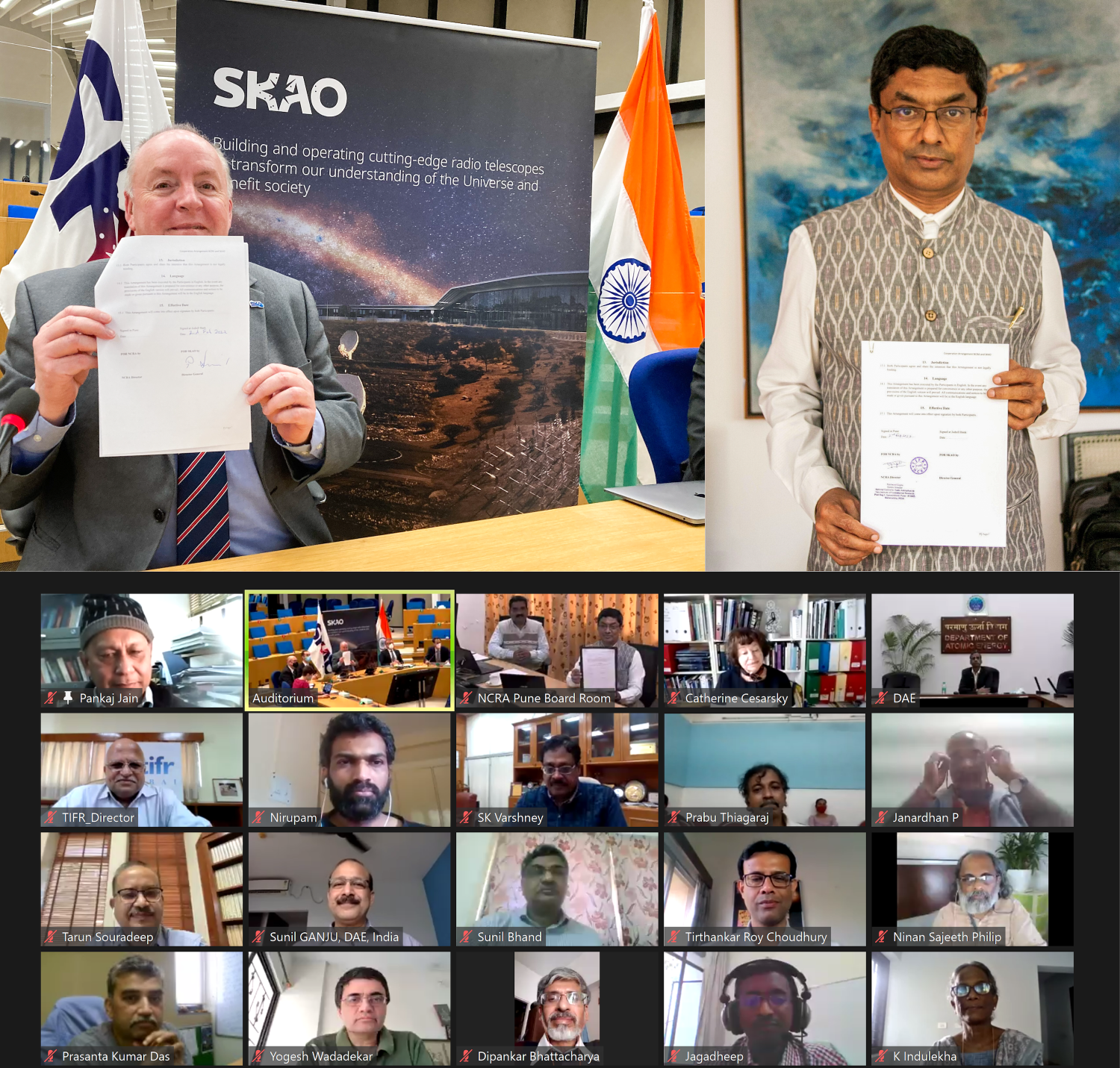SKAO signs agreement with India’s National Centre for Radio Astrophysics

Director-General of the SKA Observatory (SKAO), Prof Phil Diamond, and NCRA Centre Director Prof Yashwant Gupta signed the agreement today in an online ceremony. Also in attendance were DAE representatives, key NCRA members, and member representatives from the SKA India Consortium involved in the international SKA effort.
Long involvement with SKA
The NCRA is the current incarnation of the radio astronomy group set up in the 1960s within the Tata Institute of Fundamental Research (TIFR) and has been involved in the SKA’s development since its inception in the 1990s. The NCRA became a member of the SKAO’s precursor organisation in 2014, paving the way for India’s membership in the SKA organisation in October 2015.
Following this, the Government of India was a party to the negotiation of the SKAO Convention (the treaty establishing the SKAO as an intergovernmental organisation) between 2015 and 2016, and an active participant in the preparatory activities that led to the creation of the SKAO in early 2021. It is expected that the government of India will make a final decision on becoming a Member of the SKAO in the coming months.
Until that decision is made, the cooperation arrangement signed with the SKAO means Indian scientists and industry can continue participating in and benefiting from the SKA project, whether through the awarding of construction contracts or the accessing of services and infrastructure. As it stands, NCRA scientists participate in ten of the SKAO’s Science Working Groups, with Dr Divya Oberoi co-chairing the Solar, Heliospheric, and Ionospheric Physics working group.
Building SKA telescopes’ ‘neural network’
The NCRA is a world-leading research organisation, having developed, built, and operated the Giant Metrewave Radio Telescope, a pathfinder facility of the SKA. Located northeast of Pune in India, the GMRT and subsequently an upgraded version of it (uGMRT), has been central to driving India’s global impact in radio astronomy technology and research.
Building on the leading role the NCRA played in successfully delivering the Telescope Manager element during the SKA project’s critical design phase, India is positioned to supervise the development of the software required to monitor and control the SKA telescopes. This software will issue all the commands necessary to execute astronomical observations – akin to the human body’s neural system. Indian software engineers will also help manage the overall development of SKA software. All this will be executed with significant contributions from and benefits to the software industry in India.
“The SKAO can only be realised through international collaboration, enabling us to achieve science outcomes beyond the reach of any single organisation or country,” said Prof Diamond. “We therefore welcome our Indian colleagues’ continued involvement in the SKA project until such time that the Indian government signs and ratifies the SKAO Convention to achieve full membership.”
Prof Gupta noted: “The agreement is an important step forward in our goal of participating in the construction phase of the SKA Observatory. It will help us maintain the continuity of our ongoing activities and to get our contributions officially recognised, while we eagerly await the final approval of the main proposal which will allow us to take our rightful place in the SKAO Council.”
The cooperation agreement with the NCRA is the fourth that the SKAO has signed in a matter of months. In June 2021, the Swiss EPFL signed the first cooperation agreement with the SKAO shortly after the Observatory formally came into existence. In October 2021, the National Research Council of Canada formalised their participation in the SKA project, followed in November by the Chalmers University of Technology in Sweden.




